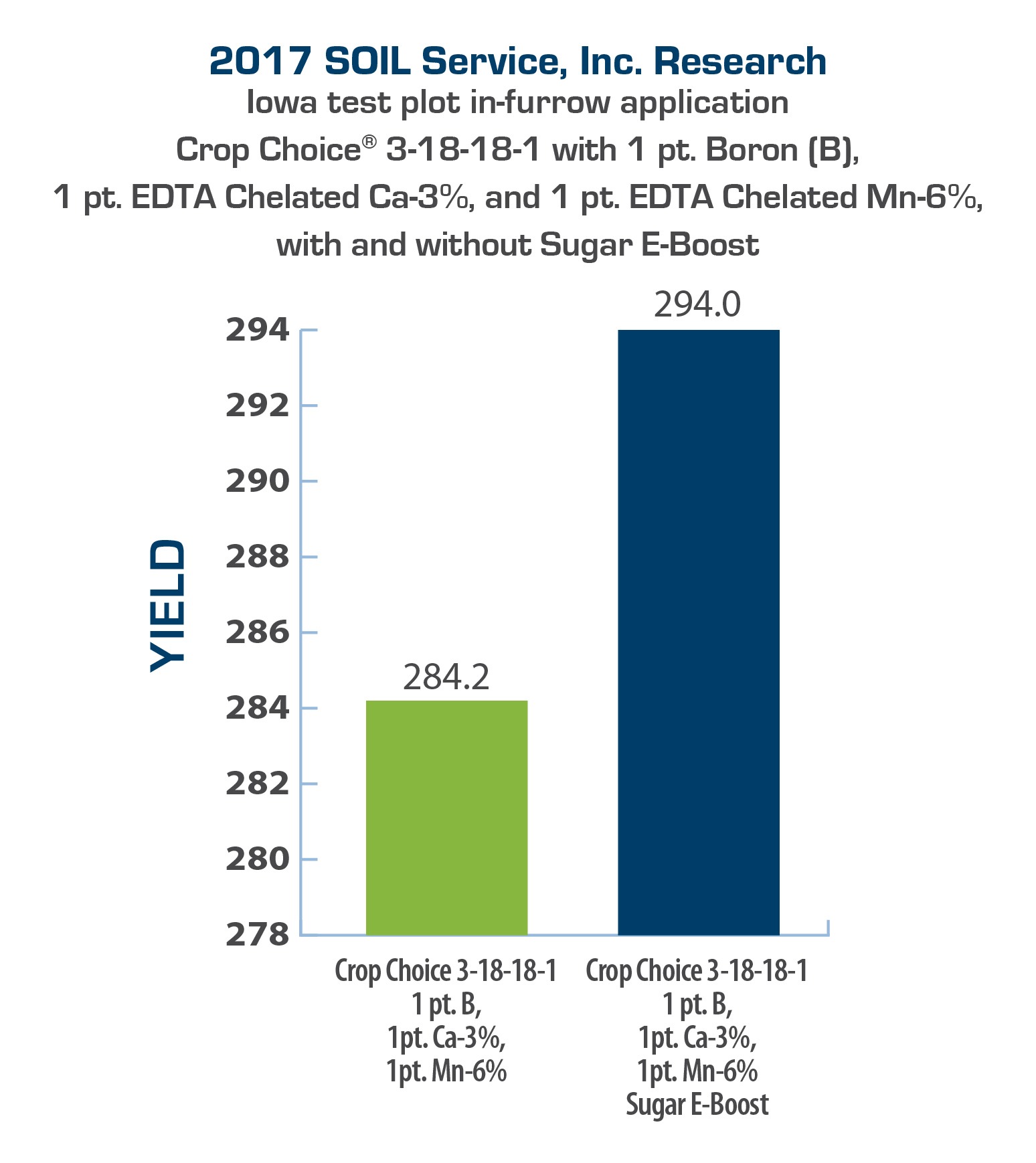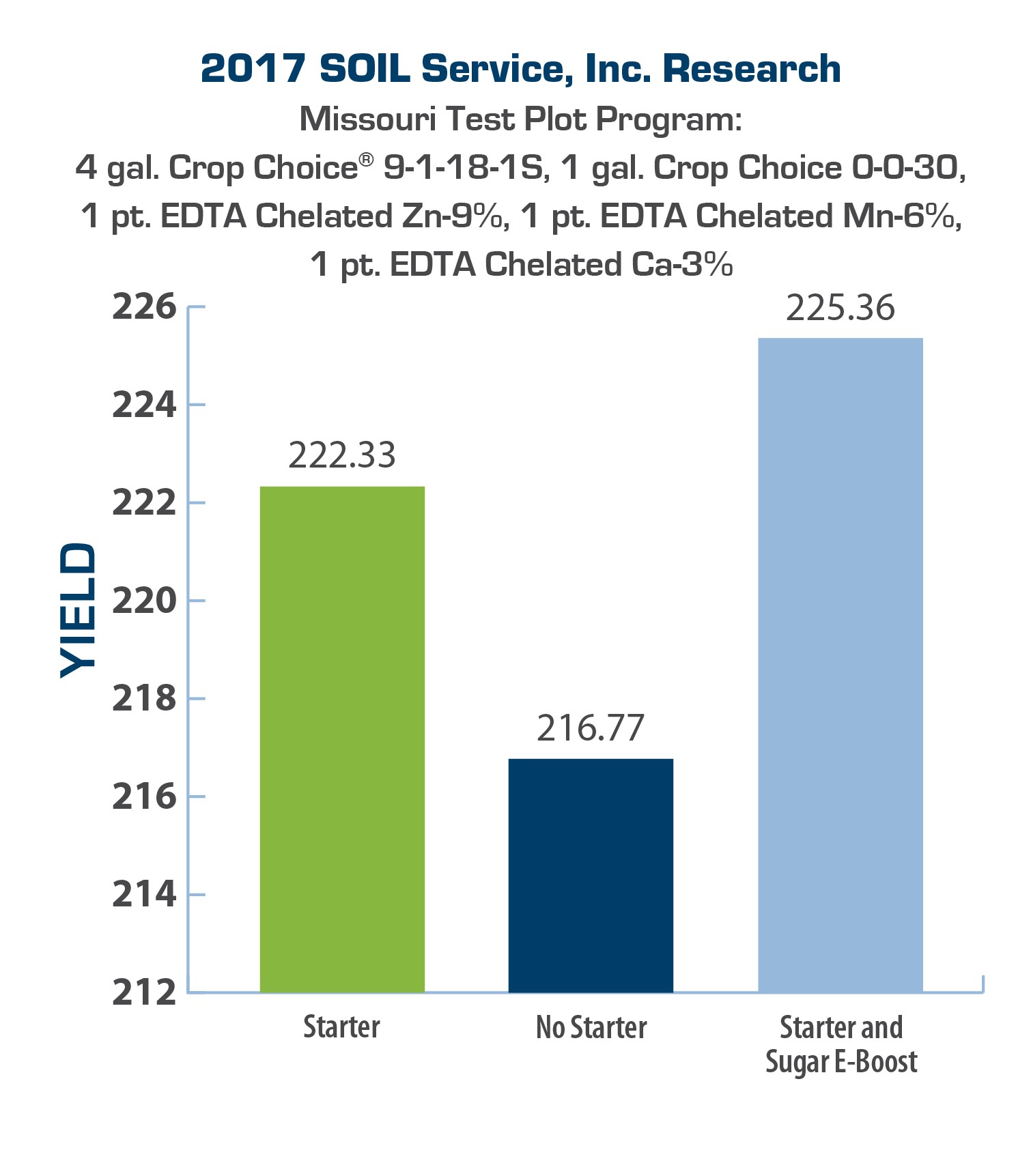Chelated Micronutrients
Achieve your production goals by providing optimum nutrient availability with chelated trace elements.
How chelated micronutrients work:
- With the assistance of chemical EDTA, the chelating process forms a protective ring around the nutrient.
- This ring protects the nutrient from being tied up in the soil or by other nutrients.
- Chelated micronutrients can be applied with starter fertilizer or foliar fertilizer.
Soil Service uses only the highest-quality EDTA micronutrients in our program.
10% Boron (B)
Boron is vital to the growth and development of the plant. It is essential for new growth, pollination, and seed reproduction, as well as maintaining a balance between sugar and starch. Boron deficiencies cause a wide range of symptoms, including dying growing tips and bushy, stunted growth. (Note: Boron is not EDTA chelated.)
7.5% Copper (Cu)
Copper is needed to activate several plant enzymes that are essential for building and converting amino acid to proteins. Copper deficiency symptoms occur most often on new plant growth, where the plant takes on a bleached appearance and may die.
2.5% Magnesium (Mg)
Magnesium helps regulate the uptake of other nutrients in the plant and acts as a carrier of phosphorus. Deficiencies usually occur in sandy soils or in soils with a high pH. Deficiencies will cause corn plants to develop a light yellow or white appearance between the parallel lines in the leaves.
9% Zinc (Zn)
Zinc is necessary for starch formation, proper root development, and seed formation and maturity. Zinc deficiencies include interveinal chlorosis on older leaves, with a characteristic shortening of the internodal area. The plant is left with a short, compressed, rosetted appearance. Zinc is the most necessary >
3% Calcium (Ca)
Plants need calcium to promote early root formation and growth. It also improves general plant vigor and sturdiness of the stalk. Calcium deficiencies can result in wrinkled or crinkled leaves, and in some cases the young leaves may fail to unfurl. The roots may also be short and tightly bunched.
4.5% Iron (Fe)
Iron functions as a catalyst in several processes within the plant. It plays a vital role in the formation of chlorophyll, functions in the respiratory enzymes, and serves to transfer energy in the plant. Iron deficiencies first exhibit in young leaves as interveinal chlorosis, which will spread over the entire leaf and turn it white. Eventually, the new growth will stop, and the leaves will die.
6% Manganese (Mn)
Manganese is essential for chlorophyll development. It also serves as a catalyst in several enzyme systems in the oxidation reduction process. Manganese deficiencies are similar to iron deficiencies and appear on the younger leaves of the plant first. Symptoms vary but include a pale color between the veins of the broadleaf plant. Manganese is the number-one micronutrient added to soybeans.
All trace elements are available in 2 × 2½ gallon containers, 275-gallon mini-bulks, and true bulk deliveries. Custom blending is the preferred option with fertilizer deliveries.
Chelated Micronutrients Research:
Proven Results


